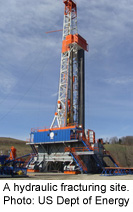
THURSDAY, May 28, 2015 (HealthDay News) — Even as the oil and gas extraction industry in the United States boomed, there was a decline in the rate of worker deaths, a new federal government study shows.
From 2003 to 2013, the oil and gas extraction industry workforce more than doubled and the number of drilling rigs increased 71 percent, the U.S. National Institute for Occupational Health and Safety said.
During that time, the number of oil and gas extraction industry worker deaths rose, but there was a 36 percent decrease in the rate of worker deaths.
The report noted an average of 108 death per year for oil and gas extraction industry workers. That works out to about 25 deaths per 100,000 workers. The peak number of deaths occurred in 2006 when the rate reached more than 32 deaths per 100,000 workers. By contrast, there were 19 deaths per 100,000 workers in 2013, according to the report.
The largest decline was in the rate of worker deaths caused by contact with objects and equipment. Transportation-related incidents continue to be the leading cause of worker deaths in the oil and gas extraction industry, according to NIOSH.
The agency called for the introduction of effective safety measures that target the most common causes of worker deaths and for improved oversight of the oil and gas extraction industry.
The study appears in the May 28 issue of Morbidity and Mortality Weekly Report, published by the U.S. Centers for Disease Control and Prevention.
More information
The U.S. Centers for Disease Control and Prevention offers tips for staying safe at work.
Copyright © 2025 HealthDay. All rights reserved.

